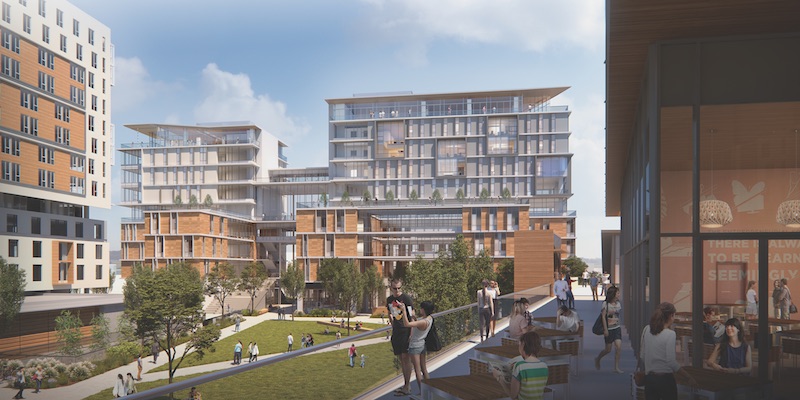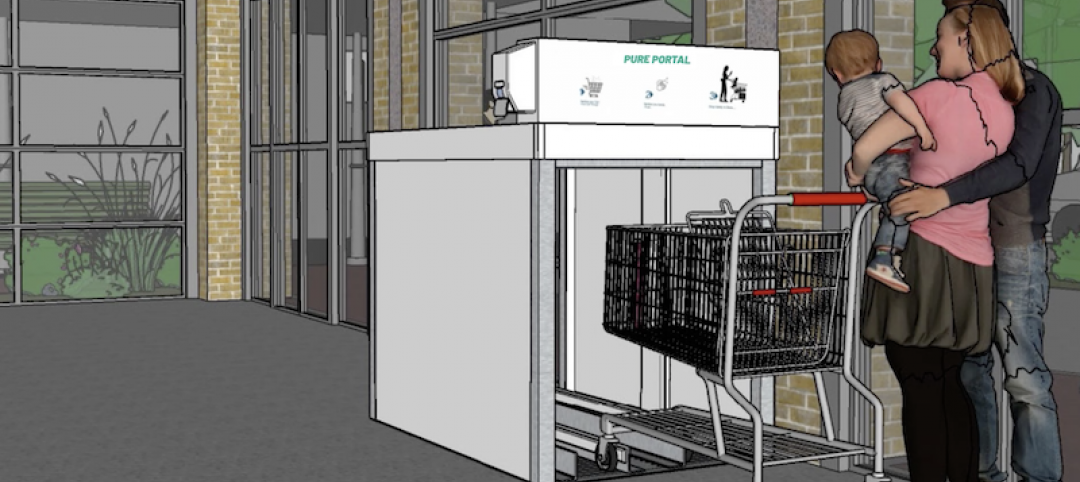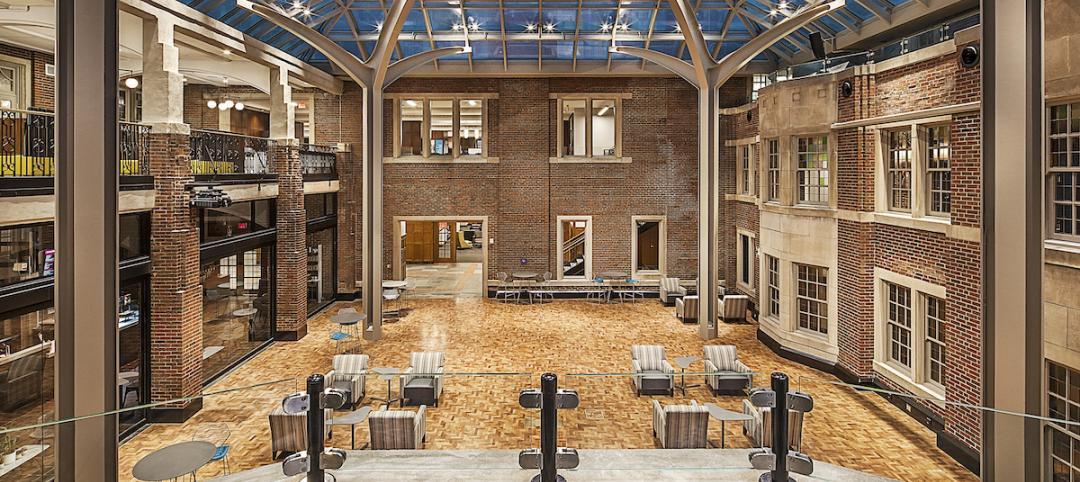Project teams are finding innovative ways to implement smart building technology. New partnerships are one avenue, says Matthew Toner, CBRE’s Managing Director of Smart Buildings and IoT, describing CBRE’s acquisition of Johnson Controls’ Global Workplace Solutions unit. “We’re innovating in proprietary solutions when a client needs a certain product that is not available on the market,” he says.
Edge Technologies has entered into alliances with the International WELL Building Institute and wellness-focused real estate developer Delos. These collaborations, says Executive Managing Director Jan-Hein Lakeman, will help analyze data from its latest smart projects in new ways while giving those organizations access to important post-occupancy information at scale. Edge has identified 13 U.S. cities as targets for new development.
The first of those, designed in collaboration with Perkins+Will, repositions a suburban New Jersey office park into a “connected campus” and headquarters for consumer goods maker Unilever. The building’s 15,000 installed sensors measure temperature, illumination, carbon dioxide, and humidity—a suite of smart tech solutions credited with cutting energy bills by 50% since startup in 2018.
In Denver, WSP’s new innovation center employs digital twin modeling programs to monitor building performance live in the virtual world. The eventual goal: Adjustments made in the VR model will push back into the actual operational model. “This is a great benefit,” notes WSP SVP Herbert Els. “We are looking at continual commissioning and engagement with clients, long after occupancy.”
This idea of “living labs” has also taken hold at HKS Architects, where Tommy Zakrzewski, PhD, Director of Integrative Energy Engineering, uses similar digital twin-modeling concepts to understand how well the firm’s new Chicago office operates, a tool that HKS can apply to client projects.
“Tied to a LEED energy-compliance model, we’ve been able to monitor trends and correct building or workspace performance through a front-end dashboard,” says Zakrzewski. “This kind of system is key for observing positive and negative facility performance and exploring new ideas.”
Working with Clark Construction and Safdie Rabines Architects, HKS is employing these ideas to create a new connected community at the University of California, San Diego’s new North Torrey Pines Living and Learning Neighborhood (see HKS rendering above). A 10-acre interdisciplinary environment blending academic, residential, commercial, and cultural programming, the project seeks to optimize the performance of six different buildings, showcasing “how architecture, engineering, and sustainability come together in a holistic way,” says Zakrzewski.
Related Stories
Healthcare Facilities | Dec 15, 2021
MEP design considerations for rural hospitals
Rural hospitals present unique opportunities and challenges for healthcare facility operators. Oftentimes, the infrastructure and building systems have not been updated for years and require significant improvements in order to meet today’s modern medical demands. Additionally, as these smaller, more remote hospitals are acquired by larger regional and national healthcare systems, the first step by new ownership is often to update and rehabilitate the building. But how can this be done thoughtfully, economically, and efficiently in ways that allow the engineering and facility staff to adapt to the changes? And how can the updates accurately reflect the specific needs of rural communities and the afflictions with which these areas most commonly face?
Sponsored | Glass and Glazing | Oct 1, 2021
Seizing the Daylight with BIPV Glass
Glass has always been an idea generator. Now, it’s also a clean energy generator.
Resiliency | Aug 19, 2021
White paper outlines cost-effective flood protection approaches for building owners
A new white paper from Walter P Moore offers an in-depth review of the flood protection process and proven approaches.
Architects | Aug 5, 2021
Lord Aeck Sargent's post-Katerra future, with LAS President Joe Greco
After three years under the ownership of Katerra, which closed its North American operations last May, the architecture firm Lord Aeck Sargent is re-establishing itself as an independent company, with an eye toward strengthening its eight practices and regional presence in the U.S.
Wood | Jun 10, 2021
Three AEC firms launch a mass timber product for quicker school construction
TimberQuest brand seeks to avoid overinvestment in production that has plagued other CLT providers.
Building Technology | Jun 1, 2021
Orro Announces Google Nest Integration for the Orro Switch
Orro, creators of the professional-grade top-of-the-line Orro Smart Living System, today announced the integration of Nest products to Orro. As a certified partner in Google’s Device Access program, this latest Orro integration allows homeowners to have seamless control and access to Nest thermostats and doorbells from any Orro Switch throughout the home – creating a single unified smart home system with advanced, intelligent ambient control.
Coronavirus | Mar 11, 2021
The Weekly show, March 11, 2021: 5 building products for COVID-related conditions, and AI for MEP design
This week on The Weekly show, BD+C editors speak with AEC industry leaders about building products and systems that support COVID-related conditions, and an AI tool that automates the design of MEP systems.
AEC Tech | Mar 4, 2021
The Weekly show, March 4, 2021: Bringing AI to the masses, and Central Station Memphis hotel
This week on The Weekly show, BD+C editors speak with AEC industry leaders about the award-winning Central Station Memphis hotel reconstruction project, and how Autodesk aims to bring generative design and AI tools to the AEC masses.
Building Tech | Feb 17, 2021
PCL Construction introduces The PURE Portal for quickly sanitizing surfaces
The solution uses FAR-UV light technology.
Contractors | Dec 4, 2020
‘Speed to market’ defines general contractor activities in 2020
Contractors are more receptive than ever to ways that help get projects done faster.

















